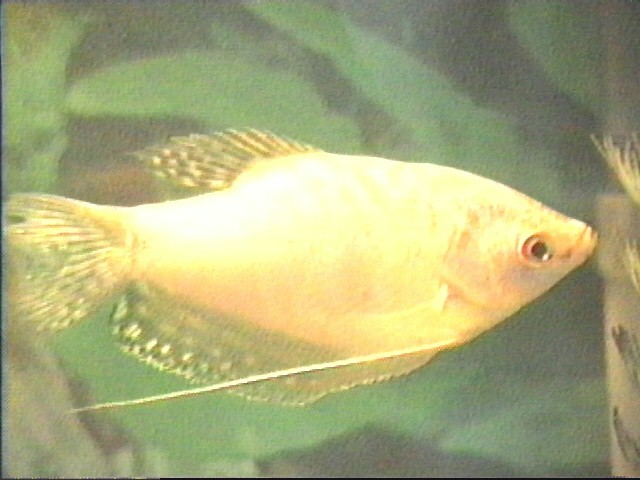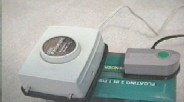 Many of the different types of filters on the market clean the water well, and only need there filter media replaced once every other month or so (unless your tank is stocked to the max, or if it's a show tank). Filter media is what the aquarium water passes through as it gets cleaned. A power filter is a perfect example of how media cleans the water. A power filter (pictured to the right) is a simple, box-shaped object that hangs off the back of your aquarium. It pulls water up through a siphon powered by a small motor and then sends it through different media before returning it to the tank. The first thing that is passes through filters the water mechanically, meaning that it takes out all the big pieces of stuff that shouldn't be in the aquarium water (uneaten food, waste, algae clumps, etc.) The mechanical media usually consists of a block of foam or a clump of blue 'filter floss'. From here, the water continues out through the foam and enters the chemical media. This is usually Granulated Activated Carbon (GAC, as it's known), a small package of carbon that absorbs some of the bad chemicals from the water. From here, the water is either returned to the aquarium by a small water-fall-like spout, a spray bar, or is filtered through a third media before going back to the tank. Used in AquaClear filters, a third section of the filter is devoted to a cartridge called AM-RID. Basically, it helps remove ammonia (fish waste chemicals) from the water, so in fact it's a second type of chemical filtration. On top of all this, bacteria loom inside of the filter and in the aquarium gravel. These bacteria are good bacteria, because they help break down the waste and such and use it as food (this is called biological filtration). A power filter is a great choice for any freshwater aquarium, and the only maintenance needed is that the media cartridges are rinsed weekly and replaced every second month (unless specified above).
Many of the different types of filters on the market clean the water well, and only need there filter media replaced once every other month or so (unless your tank is stocked to the max, or if it's a show tank). Filter media is what the aquarium water passes through as it gets cleaned. A power filter is a perfect example of how media cleans the water. A power filter (pictured to the right) is a simple, box-shaped object that hangs off the back of your aquarium. It pulls water up through a siphon powered by a small motor and then sends it through different media before returning it to the tank. The first thing that is passes through filters the water mechanically, meaning that it takes out all the big pieces of stuff that shouldn't be in the aquarium water (uneaten food, waste, algae clumps, etc.) The mechanical media usually consists of a block of foam or a clump of blue 'filter floss'. From here, the water continues out through the foam and enters the chemical media. This is usually Granulated Activated Carbon (GAC, as it's known), a small package of carbon that absorbs some of the bad chemicals from the water. From here, the water is either returned to the aquarium by a small water-fall-like spout, a spray bar, or is filtered through a third media before going back to the tank. Used in AquaClear filters, a third section of the filter is devoted to a cartridge called AM-RID. Basically, it helps remove ammonia (fish waste chemicals) from the water, so in fact it's a second type of chemical filtration. On top of all this, bacteria loom inside of the filter and in the aquarium gravel. These bacteria are good bacteria, because they help break down the waste and such and use it as food (this is called biological filtration). A power filter is a great choice for any freshwater aquarium, and the only maintenance needed is that the media cartridges are rinsed weekly and replaced every second month (unless specified above).
